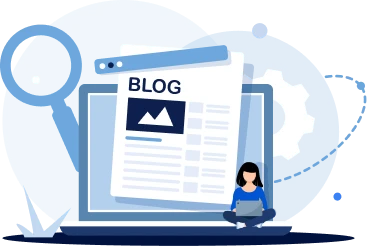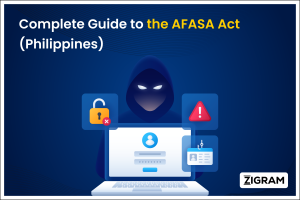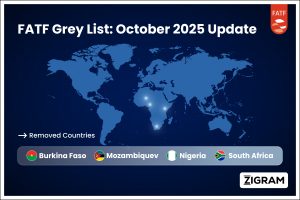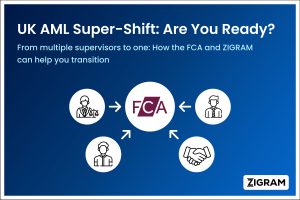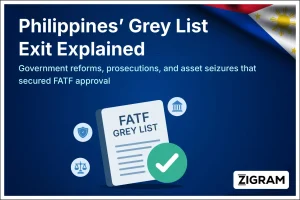Table of Contents
Nepal’s non-profit sector has emerged as a cornerstone of the country’s development, humanitarian assistance, and social welfare ecosystem. With over 50,000 registered NGOs and nearly 200 international NGOs (INGOs) operating in sectors such as health, education, disaster relief, and animal welfare, these organizations play a crucial role in filling governance and service delivery gaps. However, this expansion has also brought increased scrutiny, particularly around financial integrity and the risks of misuse for money laundering and illicit financial activities.
Recent evaluations—both domestic and international—have highlighted the vulnerability of non-profit organizations (NPOs) to financial misuse, prompting regulatory reforms under Nepal’s Anti-Money Laundering (AML) and Countering the Financing of Terrorism (CFT) framework. With global financial watchdogs like the Financial Action Task Force (FATF) and the UN Convention Against Corruption (UNCAC) emphasizing the need for NPO oversight, Nepal is moving toward a more structured, transparent, and risk-aware regulatory environment for NGOs and INGOs.
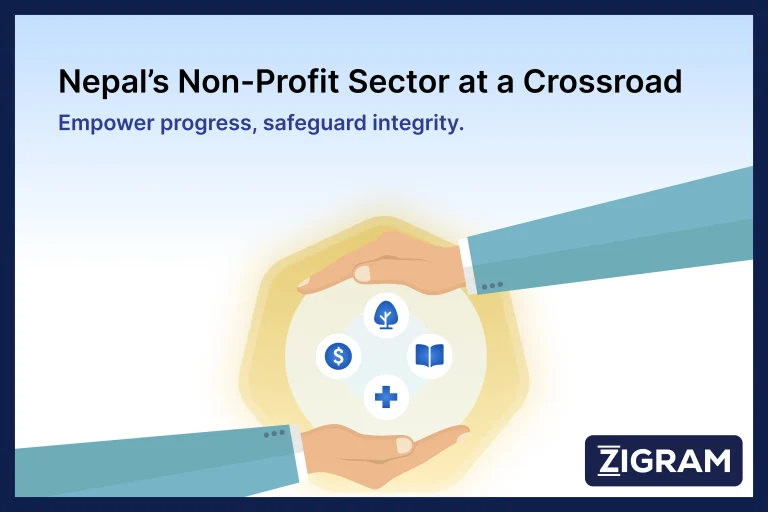
Current State of Regulation
NGOs in Nepal are primarily registered under the Association Registration Act, 1977, and regulated by the Social Welfare Act, 1992. The District Administration Offices (DAO) handle registration, while the Social Welfare Council (SWC) serves as the main oversight authority. For taxation, NGOs must register with the Inland Revenue Department (IRD). INGOs are additionally required to sign General Agreements (GA) and Project Agreements (PA) with the SWC prior to initiating operations.
Annual renewal, financial audits, and program reports are mandatory for NGOs. Yet, compliance is uneven. Many operate without affiliation to the SWC or fail to renew licenses, contributing to oversight gaps and raising concerns about potential abuse.
In 2025, the SWC proposed a dedicated AML Directive for non-profits. This new regulation aligns with FATF guidelines and aims to close loopholes in reporting, due diligence, and monitoring.
Updated FATF Grey‑Listing & Reform Momentum
Nepal was re-added to the FATF Grey List on February 21, 2025, following a FATF plenary in Paris, due to strategic deficiencies in enforcement, real estate, cooperatives, and AML/CFT capacity. FATF emphasized the need for risk-based supervision and targeted oversight of the non-profit sector, while cautioning against disrupting legitimate NGO operations. This renewed grey-listing drive has injected fresh urgency into Nepal’s AML reform agenda.
APG & AML Reform Coordination
The Asia‑Pacific Group (APG) December 2024 evaluation upgraded Nepal’s compliance on several FATF recommendations—R2 (Risk assessment), R10 (Customer due diligence), R19 (SRBs/STRs), R23 (DNFBPs)—though 11 recommendations remain partially compliant .
A June 2024 follow-up report noted that Nepal amended its AML Act to require annual national and sectoral risk assessments, and introduced a National Strategy & Action Plan (NSAP) for 2024–2029, formally approved July 1, 2024.
However, the report flagged that risk assessments remain outdated, coordination among agencies is weak, and effective resource allocation is lagging.
Classification of NGOs as DNFBPs
The 2020 National Risk Assessment deemed non-profits as having medium vulnerability to money laundering, noting data shortfalls and inadequate legislative coverage. The APG/FATF evaluation also confirmed that NGOs and INGOs are now officially classified as Designated Non‑Financial Businesses & Professions (DNFBPs) under AML regulations, though oversight remains inconsistent.
SWC AML Directive Enhancements
The SWC’s draft AML Directive for non-profits has been enhanced to include mandatory tracking of "source of funds" and "investment usage", aligning with FATF’s NPO risk framework . Furthermore, Ekantipur reports state that the directive will require NGOs to monitor property-purification activities, broadening oversight into asset-related program components.
Regulatory Challenges
Despite the legal framework, several persistent challenges undermine the effectiveness of AML oversight in the non-profit sector:
- Fragmented Oversight: Regulatory responsibilities are dispersed across SWC, local governments, and sectoral ministries, leading to coordination challenges. .
- Non-uniform Financial Reporting: Smaller charities often lack capacity or awareness to maintain proper documentation or conduct third-party audits.
- Unregulated Fund Flows: Some INGOs receive foreign donations directly, bypassing centralized scrutiny. .
- Lack of Technical Capacity: Regulatory institutions face constraints in conducting regular, high-quality audits and field monitoring.
- Compliance Burden on Small NGOs: Many local charities with minimal administrative resources find it difficult to meet evolving AML obligations. .
These challenges highlight the need for standardization, digitization, and institutional strengthening.
Case Studies: Real‑World Examples of Financial Abuse
Nepal Red Cross Society (NRCS) – Misallocation of Earthquake Relief Funds
Overview:
After the 2015 earthquake, NRCS received over NPR 9 billion in donations intended for reconstruction. Investigative reporting revealed that at least NPR 245 million was spent on administrative luxuries—vehicles, electronics, foreign travel, and a lavish one-day review event in Chitwan that alone cost NPR 7 million
Modus Operandi & Weaknesses:
- Spending included 200 motorcycles (~NPR 61 million), more than 10 cars (~NPR 49 million), computers (~NPR 30 million), inflated staff salaries, and lavish trips .
- Instead of investigating the misuse, NRCS formed an internal committee to identify media whistleblowers—a strategy criticized for shielding insiders rather than promoting accountability
- The International Federation of Red Cross (IFRC) intervened, summoning NRCS officials to Malaysia to respond to allegations—highlighting donor pressure and external scrutiny
This case exemplifies how NGOs with significant funding streams can misappropriate funds internally, obscured behind legitimate operational costs. It illustrates the need for external audits, transparent procurement, and regulatory checks over large-scale nonprofits.
Fake Education Consultancies – Laundering via Fake NOCs
Overview:
Unregistered education consultancies exploited foreign currency flows under the guise of student processing, laundering funds through falsified No Objection Certificates (NOCs).
Mechanism & Impact:
- Investigations led to the arrest of 48 owners across ~2,500 consultancies involved in currency manipulation
- Police raids uncovered forged MoE-issued documents and multiple passports.
- Reddit users described how these firms take “15–20% from the university every semester… the more students they enroll the more money they make,” painting a system turned for illicit profiteering.
These shell-like entities facilitated untraceable foreign inflows and outflows, bypassing regulated channels—demonstrating how easily unregistered organizations can be used for laundering through porous financial entry points.
Faith Nepal – Misuse of Poverty Alleviation Fund
Overview:
In mid-2024, Faith Nepal was found to have diverted NPR 5.7 million in poverty-alleviation grants allocated to support 15 community groups in the Dhanusha district.
Events & Accountability:
- The PAF officer confirmed that funds didn’t reach the intended beneficiaries .
- The NGO’s chairperson and coordinator became fugitives; the NGO was blacklisted, and police were ordered to arrest those responsible .
This case spotlights grassroots-level corruption: local grants diverted due to weak tracking and lax monitoring in remote areas. It underscores the need for better disbursement oversight and real-time auditing of field-level fund flows.
Why These Cases Matter
These diverse examples—from national-level entities to grassroots NGOs and informal consultancies—highlight the spectrum of AML risk in Nepal’s nonprofit ecosystem:
- High-value administrative misuse (NRCS)
- Parasitic laundering through shell structures (education consultancies)
- Corruption of community-level grants (Faith Nepal)
Such cases reinforce the urgency of implementing:
- Mandatory external audits for NGOs receiving significant funding.
- Digitized fund-tracking systems, including donor inflows and beneficiary disbursements.
- Enhanced due diligence protocols by financial institutions handling NGO accounts.
- Legal enforcement mechanisms to respond to transparency violations swiftly.
Institutional Measures and Policy Reforms
Nepal’s grey-listing by the FATF has injected urgency into AML/CFT reform, including within the non-profit space. Measures under way include:
Draft AML Directive for NPOs:
Introduced by the SWC, this document outlines:
- Risk classification of NGOs
- Recordkeeping and reporting protocols
- Due diligence and beneficial ownership verification
SWC Digitization Initiative:
Includes systems for e-registration, project tracking, and donor reporting to increase transparency.
Collaborative Oversight:
The Nepal Rastra Bank (NRB), Ministry of Finance, and Commission for the Investigation of Abuse of Authority (CIAA) have strengthened their coordination efforts.
Civil Society Engagement:
AML workshops and stakeholder consultations have been held to sensitize and involve NGO operators in shaping compliance obligations.
FATF-Aligned Reforms: Directive 2081 (2025 Update)
Nepal’s updated AML/CFT directive—“सम्पत्ति शुद्धीकरण तथा आतङ्कवादी क्रियाकलापमा वित्तीय लगानी निवारण सम्बन्धी (पहिलो संशोधन) निर्देशन, २०८१”—though not directly targeted at NGOs, places them in the “high-risk” customer category for financial institutions. Key provisions include:
- Enhanced Due Diligence (EDD): Banks must verify Ultimate Beneficial Owners (UBOs), funding sources, and intended purpose before onboarding NGOs/INGOs.
- Prohibition Clause: Refusal to disclose UBOs or funding details can result in account denial or closure.
- Cross-Border Transaction Monitoring: All foreign inflows must be documented and sourced from jurisdictions with adequate AML laws.
- Ongoing Monitoring: Financial institutions must conduct regular reviews of NGO/INGO transactions and report suspicious activity.
- Record-Keeping: All data must be maintained for at least five years and made available for inspection by the Financial Information Unit (FIU) or NRB.
This directive raises the compliance bar significantly for both NGOs and financial institutions, demanding closer scrutiny of nonprofit financial flows.
Strategic Way Forward
To ensure Nepal’s non-profit sector remains resilient and credible, the following reforms are recommended:
- Mandatory Affiliation with SWC: All NGOs and INGOs should be required to register with and report to the SWC.
- Centralized Digital Oversight Platform: Develop an integrated system for registration, donor disclosures, project delivery, and financial reporting.
- AML Training for Nonprofits: Build internal capacity in small and medium NGOs through training programs on compliance and financial transparency.
- Risk Classification: Adopt a tiered risk-based framework to apply differentiated oversight based on size, funding source, and operational scope.
- Streamlined Interagency Coordination: Reduce duplicative reporting by establishing clear regulatory mandates across ministries and oversight bodies.
- Donor Verification Protocols: Enforce rigorous standards for verifying the legitimacy and purpose of foreign donors and aid flows.
Conclusion
Nepal stands at a critical juncture in its effort to strengthen the integrity of its nonprofit sector. While NGOs and INGOs continue to provide invaluable services in health, education, and humanitarian relief, they must now navigate an evolving AML/CFT landscape marked by increased scrutiny and accountability. Regulatory efforts should focus not on restricting the work of civil society but on ensuring that their operations are transparent, accountable, and resistant to misuse.
To ensure Nepal’s non-profit sector remains resilient and credible, the following reforms are recommended:
By combining legal reform, institutional digitization, risk-based supervision, and stakeholder engagement, Nepal can build a non-profit environment that protects against financial abuse while preserving the essential role of civil society in nation-building.
Sources
FATF Grey‑Listing & Reform Context
FATF – Jurisdictions Under Increased Monitoring (Feb 21, 2025) – confirms Nepal’s grey-list status and calls for enhanced NPO oversight. (fatf-gafi.org)
The Kathmandu Post – “It’s official: Nepal falls back into FATF grey list” (Feb 22, 2025) – provides context on FATF’s decision. (kathmandupost.com)
Risk LexisNexis – AML Risks as Nepal Returns to FATF Grey List – highlights vulnerabilities in enforcement and NPO oversight. (risk.lexisnexis.com)
APG Evaluation & AML Reform Coordination
FATF/APG – Nepal Follow-Up Report (Dec 2024) – outlines partial progress on FATF recommendations. (complyadvantage.com)
Nepal Rastra Bank – 1st Follow-Up Report to MER (June 2024) – details the NSAP and annual risk assessment mandates.
NGOs as DNFBPs & SWC Directive Changes
Kathmandu Post – SWC to issue AML directive (Sept 29, 2020) – highlights early AML oversight measures. (kathmandupost.com)
Kathmandu Post – NGOs not affiliated with SWC may be at risk (Jan 9, 2020) – warns about unregulated NGOs. (kathmandupost.com)
Ekantipur – NGOs to monitor property purification (Feb 10, 2025) – confirms expansion of SWC’s AML scope.
NRCS Misuse Case
The Annapurna Express – “Irregularities galore in NRCS” – investigative coverage of fund diversion after the 2015 earthquake.
MyRepublica – “NRCS forms panel to find leakers instead of addressing misuse” – highlights institutional response. (myrepublica.nagariknetwork.com)
Fake Education Consultancy Laundering
Kathmandu Post & Nepalese media – Fake education consultancies busted – reports on fraud and currency laundering.
Reddit – First-hand usuario account – exposes commission practices.
Faith Nepal Case
MyRepublica – “Faith Nepal blacklisted for misusing PAF funds” – documents diversion of NPR 5.7M. (myrepublica.nagariknetwork.com)
Additional AML Context
Business Standard – Opp calls for resignation over grey-listing (Feb 2025) – outlines political fallout. (business-standard.com)
Reuters – FATF removes Philippines but adds Laos and Nepal (Feb 21, 2025) – confirms the grey-list shift. (reuters.com)
Kathmandu Post – Government to implement time-bound plan (Apr 9, 2025) – details government response. (myrepublica.nagariknetwork.com)
- #Nepal
- #nonprofit
- #NGO
- #INGO
- #Compliance
